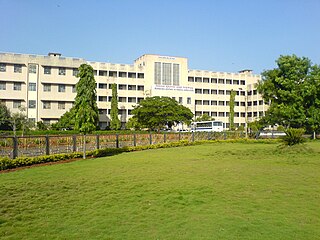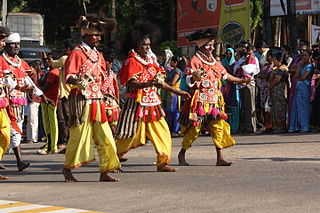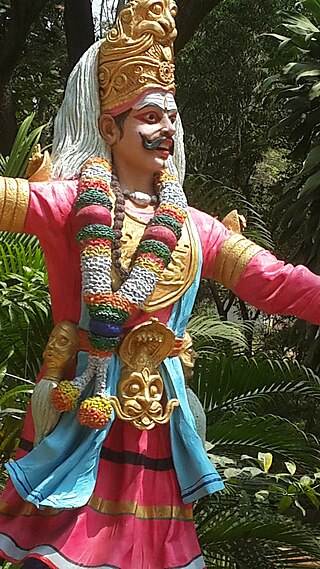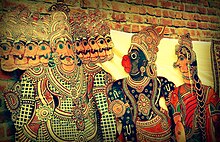
The Kannadigas or Kannaḍigaru, often referred to as Kannada people, are a Dravidian ethno-linguistic group who natively speak Kannada and trace their ancestry to the South Indian state of Karnataka in India and its surrounding regions. The Kannada language belongs to the Dravidian family of languages. Kannada stands among 30 of the most widely spoken languages of the world as of 2001.
Arebhashe or Aregannada or Gowda Kannada is a dialect of Kannada mainly by Gowda communities in the region Madikeri, Somwarpet, and Kushalnagar taluks of Kodagu district, Sullia, taluks of Dakshina Kannada district; Bangalore and Mysore districts in the Indian state of Karnataka. As well as Bandadka, Kasaragod District in the Indian state of Kerala, Arebhashe is also called Gowda Kannada. The language was recognized by the Karnataka State government and formed an academy in 2011 to preserve the culture and literature of the Arebhahse Region which is named as Karnataka Arebhashe Samskruthi mathu Sahitya Academy supported by then Chief Minister D. V. Sadananda Gowda.

The Kodava people or Kodavas or Codavas are an ethno-linguistic group from the region of Kodagu in the southern Indian state of Karnataka, who natively speak the Kodava language. They are traditionally land-owning agriculturists and patrilineal, with martial customs. Kodavas worship ancestors and weapons. They used to worship swords, bows, arrows and later guns. Hence, Kodavas are the only ones in India permitted to carry firearms without a license.

Indian folk music is diverse because of India's enormous cultural diversity. It is sung in various languages and dialects throughout the length and breadth of this vast nation and exported to different parts of the world owing to migration.

Karnataka Rajyotsava, also known as Karnataka State Day, is a public holiday celebrated annually on 1 November in the Indian state of Karnataka. It commemorates the merger in 1956 of the Kannada-speaking regions of southwestern India under the States Reorganisation Act to form the state.
Kamsale is a unique folk art performed by the devotees of God Mahadeshwara. Kamsale is a brass made musical instrument. Its origin is traced to the Mythological period.
Dollu Kunitha, is a major popular drum dance of Karnataka.

Male Mahadeshwara Betta is a pilgrim town located in the Hanur taluk of Chamarajanagar district of southern Karnataka. It is situated at about 150 km from Mysuru and about 210 km from Bengaluru. The ancient and sacred temple of Sri Male Mahadeshwara is a pilgrim centre where Mahadeshwara lived, practiced medicine as Sidda, taught ahimsa to people in and around the seven hills. It draws lakhs of pilgrims from the states of Karnataka and Tamil Nadu. The area of the present temple surroundings is 155.57 acres (0.6296 km2). In addition, the temple has lands at Talabetta, Haleyuru and Indiganatha villages. Amidst dense forest, the temple attracts not only the pilgrims but also nature lovers. The height of the hill is about 3000 feet above sea level.

Dharwad or Dharawada is an administrative district of the state of Karnataka in southern India. The administrative headquarters of the district is the city of Dharwad, also known as Dharwar. Dharwad is located 425 km northwest of Bangalore and 421 km southeast of Pune, on the main highway between Chennai and Pune, the National Highway 4 (NH4).

The Folklore Museum at Mysore, India, is a museum which exhibits folk art and crafts from all over the state of Karnataka

Gaarudi Gombe is a folk dance prevalent in the state of Karnataka, India. Dancers adorn themselves with giant doll-suits made of bamboo sticks. The term Gaarudi-Gombe means magical-doll in the native language, Kannada. This dance is performed during major festivals and also in the procession held during the festivities of Mysore Dasara. This dance is also known as Tattiraya in the coastal districts of Karnataka. The term Tattiraya means a person carrying a doll made of bamboo sticks.

Mylara Lingeshwara Temple is a Hindu temple dedicated to the god, a form of the god Shiva in Mylara. Located at center of Karnataka, It is in the extreme south-western corner of Hoovina Hadagali taluk, Vijayanagara district, Karnataka, India. It is 2 km from Tungabhadra river and 36 km from Hadagali 36 km from Ranebennur and 39 km from Harapanahalli
The term gorava refers to men and women belonging to the Kuruba community who have taken a special vow and dress in the traditional overcoat and headgear, and beat a damroo shouting "Elukoti.. Elukoti. Elukoti.", meaning seven crores - the number of Goravas Mailara, armed with a bow and arrows, took to battle against a demon, Mallasura and his brother. They also dance in ritualistic warrior-like dance called the Goravara Kunitha, which involves use of a small dollu in one hand and a flute in other. Goravas wear a headgear made of bear hair.

Goravara Kunitha is a traditional dance of Kuruba Gowdas of Karnataka. Kuruba Gowdas are devotees of lord Mailara Linga, men belonging to this community take Deekshe or the process of initiation to follow the tradition of Gorava. The Deekshe is usually performed before marriage. They dedicate their rest of lives for lord Mailara Linga and the folk form Goravara Kunitha.
Shashidhar Adapa is an Indian production designer, set designer and puppet designer, known predominantly for his work in Kannada cinema. In 1984, he formed Prathiroopi, a television, film, and stage set design company.

Karibasavaiah was an Indian actor who appeared in Kannada cinema and a theatre personality. He has acted in over 120 films. He died on 3 February 2012 after a road traffic accident in Bangalore. He made his debut in the movie Undo Hodha, Kondu Hodha. Some of his memorable films are Kotreshi Kanasu, Janumada Jodi, Galate Aliyandru, Mungarina Minchu, Yaarige Salute Sambala, Police Story 2, and Ullasa Utsaha.

The following outline is provided as an overview of and topical guide to Karnataka:

Janapada Loka, is a folk museum that has an exclusive display of the village folk arts of Karnataka. It is under the aegis of the Karnataka Janapada Parishat. Loka Mahal, a wing in the museum has a display of 5,000 folk artifacts. It is situated in Ramanagara, Ramanagara district in the Indian state of Karnataka, on the Bangalore-Mysore highway, 53 kilometres (33 mi) to the south of Bangalore.

Kangeelu or Kangilu is a traditional folk dance from Udupi and Dakshina Kannada region in the South Indian state of Karnataka. It is a spiritual dance performed on the full moon day in Mai month of Tulu calendar. It is believed to keep away disease, evil spirits, and other negative energy and serves to foster peace, harmony, and a community spirit. The dance is performed as a part of a seven day Kangilu Kunitha to propitiate the goddess Khadgeshwari and Koragajja, a spirit considered as a form of god Shiva.























